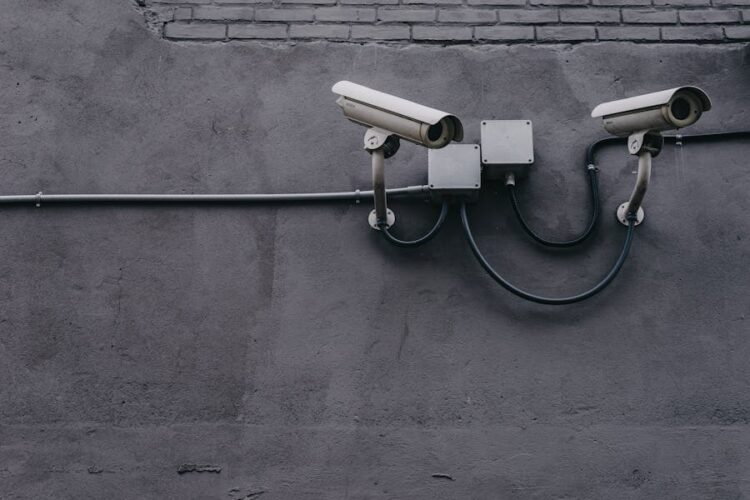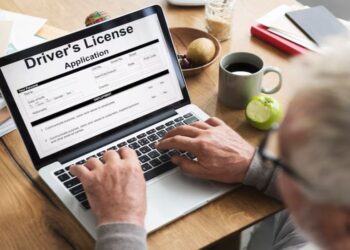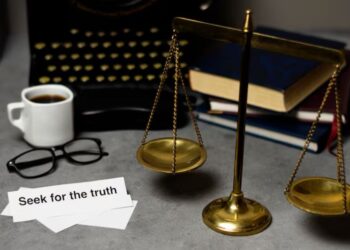The rise of surveillance technology has revolutionized the way we approach crime prevention and investigation. With security cameras popping up on every street corner, in businesses, and even on our doorsteps, the chances of capturing crucial evidence on film have never been higher. But as the use of security footage becomes increasingly prevalent in legal proceedings, a complex web of legal questions and challenges has emerged.
From determining the admissibility of footage as evidence to navigating the murky waters of privacy laws, the legal landscape of security footage in court can be treacherous to navigate.
In the courtroom, security footage can serve as a silent witness, providing objective and unbiased evidence that can help prosecutors build a strong case against defendants or aid in the defense of the accused. However, the increasing reliance on security footage has also raised important legal questions about privacy, admissibility, and the potential for misuse.
In this post, we’ll delve into the legal intricacies of using security footage in court, exploring the key considerations, precedents, and best practices that lawyers, investigators, and business owners need to know to effectively leverage this powerful tool in the pursuit of justice.
The Increasing Importance Of Video Evidence In Legal Proceedings
In today’s digital age, the role of video evidence in legal proceedings has become increasingly pivotal. With the proliferation of commercial security systems, dashboard cameras, and even smartphone recordings, the availability of video footage has skyrocketed. As a result, courts are now more likely than ever to rely on video evidence to piece together the events surrounding a crime or incident.
In fact, studies have shown that video evidence can be a crucial factor in determining the outcome of a case, with many jurors citing it as a key influencer in their decision-making process. Moreover, the use of video evidence has also been instrumental in exonerating wrongly accused individuals, highlighting the importance of this technology in ensuring justice is served.
As the volume and quality of video footage continue to grow, it’s essential for legal professionals, law enforcement, and businesses to understand the legal implications of security footage and how to effectively navigate its use in court.
Understanding The Legal Framework For Admitting Security Footage As Evidence
When it comes to admitting security footage as evidence in court, the legal landscape can be complex and nuanced. It’s essential to understand the legal framework that governs the admissibility of security footage, as it can make or break a case. In the United States, for example, the admissibility of security footage is governed by the Federal Rules of Evidence, which provide guidelines for the authentication and admission of electronic evidence.
One of the key considerations is the issue of authenticity. The court must be satisfied that the footage is genuine and has not been tampered with or altered in any way. This can be achieved through the use of hash values, digital signatures, and other forms of digital authentication. Additionally, the chain of custody of the footage must be carefully documented to ensure that it has not been compromised or contaminated.
Furthermore, the court must also consider the relevance and reliability of the footage. Is the footage relevant to the case at hand? Does it provide probative value? Is the footage of sufficient quality to be deemed reliable? These are just a few of the questions that the court will consider when determining the admissibility of security footage.
It’s also important to note that different jurisdictions may have different rules and regulations regarding the admissibility of security footage. For instance, some states may have specific laws governing the use of surveillance cameras, while others may have more lenient rules. Understanding the legal framework in your jurisdiction is crucial to ensuring that your security footage is admissible in court.
By understanding the legal framework for admitting security footage as evidence, you can increase the chances of successfully presenting your case in court. Whether you’re a business owner, law enforcement officer, or legal professional, it’s essential to stay informed about the latest developments in this area to ensure that your security footage is used effectively and legally.
Chain Of Custody: Preserving The Integrity Of Security Footage
When it comes to presenting security footage as evidence in court, the chain of custody is crucial. This refers to the meticulous documentation and handling of the footage from the moment it’s captured to the moment it’s presented in court. Any break in the chain of custody can render the footage inadmissible, potentially devastating to your case.
Imagine a scenario where a critical piece of evidence is dismissed due to a minor mistake in handling or storage. A prosecutor or defense attorney can argue that the footage has been tampered with, altered, or contaminated, casting doubt on its authenticity. The consequences of such a mistake can be severe, leading to a lack of trust in the evidence and potentially jeopardizing the outcome of the case.
To avoid this, it’s essential to establish a clear chain of custody, detailing every step of the footage’s journey. This includes the person who captured the footage, the equipment used, the storage and handling procedures, and every individual who has accessed or handled the footage. This meticulous record-keeping ensures that the footage remains intact and unaltered, maintaining its integrity and credibility in the eyes of the court. By doing so, you can confidently present your security footage as evidence, knowing that it will withstand scrutiny and support your case.
Authentication And Verification Of Security Footage
When it comes to presenting security footage as evidence in court, one of the most critical steps is to ensure that the footage is authentic and verifiable. This is where the process of authentication and verification comes into play. Authentication involves confirming that the footage is what it claims to be, while verification involves confirming that the footage has not been tampered with or altered in any way.
In the context of security footage, authentication and verification are crucial because they can make or break a case. If the footage is found to be inauthentic or tampered with, it can be deemed inadmissible in court, which can have serious consequences for the prosecution or plaintiff. On the other hand, if the footage is authenticated and verified, it can be a powerful piece of evidence that can help to establish guilt or innocence.
So, how can you ensure that your security footage is authenticated and verified? One key step is to maintain a clear chain of custody, which involves documenting every step of the footage’s handling and storage, from the moment it is recorded to the moment it is presented in court. This can include details such as who handled the footage, when it was handled, and how it was stored.
Additionally, it’s essential to use specialized software and equipment to analyze the footage and detect any signs of tampering or alteration. This can include techniques such as video watermarking, which involves embedding a hidden digital signature into the footage to detect any changes.
By taking these steps, you can ensure that your security footage is authenticated and verified, and that it can be presented as a reliable and trustworthy piece of evidence in court.
Privacy Concerns: Balancing Public Safety With Individual Rights
As security cameras become an increasingly ubiquitous feature of modern life, the legal landscape surrounding their use is growing more complex. One of the most pressing concerns is the delicate balance between public safety and individual privacy. On one hand, security footage can be a powerful tool in the pursuit of justice, providing crucial evidence in criminal investigations and helping to keep communities safe. On the other hand, the proliferation of cameras raises serious questions about the potential for surveillance and intrusion into private lives.
In the context of court proceedings, this tension can play out in a number of ways. For example, defendants may argue that the use of security footage violates their reasonable expectation of privacy, particularly if the footage was captured in a private or semi-private setting. Prosecutors, on the other hand, may argue that the footage is essential to building a case and that its use is justified by the need to protect public safety.
As courts grapple with these competing interests, it’s clear that the legal framework surrounding security footage is still evolving. By understanding the complexities of this issue, legal professionals and law enforcement can work together to ensure that the use of security footage is both effective and respectful of individual rights.
Admissibility Requirements: What Makes Security Footage Usable In Court
When it comes to presenting security footage as evidence in court, the admissibility requirements are crucial to consider. It’s not simply a matter of capturing the footage and submitting it as evidence; the legal system has strict standards to ensure the integrity and reliability of the evidence. In order for security footage to be deemed admissible, it must meet certain criteria.
Firstly, the footage must be authenticated, meaning it must be proven to be genuine and untampered with. This can be achieved through the testimony of the person who installed or maintained the camera, or through the use of digital watermarking or other authentication technologies.
Additionally, the footage must be relevant to the case at hand, meaning it must have a direct bearing on the facts of the case. The quality of the footage is also a consideration, with the court looking for clear and concise images that can be easily viewed and understood.
Furthermore, the chain of custody must be established, demonstrating that the footage has been handled and stored properly to prevent tampering or alteration. By meeting these admissibility requirements, security footage can become a powerful tool in the pursuit of justice, providing a unique and unbiased perspective on the events in question.
Best Practices For Collecting, Storing, And Presenting Security Footage
When it comes to collecting, storing, and presenting security footage in a legal setting, it’s crucial to follow best practices to ensure the integrity and admissibility of the evidence. One of the most critical steps is to establish a clear chain of custody, documenting every step of the footage’s journey from capture to presentation in court. This includes logging who handled the footage, when, and why, as well as maintaining a secure and tamper-evident storage system.
Additionally, it’s essential to maintain the original, unedited footage, and create a duplicate copy for editing and enhancement purposes. This ensures that the original footage remains intact and uncontaminated, while still allowing for necessary enhancements to improve clarity and visibility.
When presenting security footage in court, it’s vital to provide clear and concise explanations of the footage, including the time and date of the recording, the location, and any relevant contextual information. It’s also important to be prepared to authenticate the footage, providing evidence that it is genuine and has not been tampered with.
Furthermore, it’s recommended to work with a trained video forensic expert who can assist in the analysis, enhancement, and presentation of the footage. These experts can help to ensure that the footage is presented in a clear and concise manner, and that it is admissible in court.
By following these best practices, you can ensure that your security footage is collected, stored, and presented in a way that is legally sound, and that it can be effectively used as evidence in court.
Ethical Considerations: Using Security Footage To Influence Public Opinion
As security cameras become an ubiquitous presence in our daily lives, the lines between public safety and privacy continue to blur. While security footage can be a powerful tool in the pursuit of justice, its use can also raise important ethical considerations. One of the most critical concerns is the potential for security footage to be used to influence public opinion, rather than simply to present the facts of a case.
In an era where social media can amplify a single image or video clip to global proportions, the risk of sensationalism and manipulation is very real. Security footage can be edited, cropped, and presented in a way that is deliberately misleading or inflammatory, sparking public outrage and tainting the jury pool.
Moreover, the selective release of security footage can create a distorted narrative, omitting crucial context or exculpatory evidence. This can have devastating consequences for individuals accused of a crime, who may be subjected to a trial by the media before they even set foot in a courtroom.
It is essential, therefore, that legal professionals, law enforcement, and the media exercise caution and restraint when handling security footage. By doing so, we can ensure that this powerful tool is used to serve the pursuit of truth, rather than to fuel public hysteria or confirm biases. Ultimately, the responsible use of security footage is crucial to maintaining the integrity of our legal system and upholding the principles of justice.
Case Law Examples: How Security Footage Has Impacted Court Decisions
The use of security footage in court proceedings has become increasingly prevalent, and the impact it can have on the outcome of a case cannot be overstated. From exonerating the wrongly accused to providing crucial evidence in high-profile crimes, security footage has played a pivotal role in shaping the legal landscape. In this section, we’ll delve into some notable case law examples that illustrate the power of security footage in influencing court decisions.
One such example is the 2013 Boston Marathon bombing case, where security footage from various cameras throughout the city helped identify the suspects, leading to their eventual capture and conviction. In another instance, security footage from a convenience store caught a thief in the act, and the footage was later used to convict the defendant. These cases, among many others, demonstrate the significant weight that security footage can carry in court, often serving as a decisive piece of evidence in determining guilt or innocence.
However, it’s not just about the footage itself – the way it’s handled, stored, and presented in court can also have a significant impact on the outcome of a case. For instance, in a 2019 case, the court ruled that security footage was inadmissible as evidence because it had been tampered with, highlighting the importance of proper chain of custody and video authentication procedures.
As we continue to navigate the complex legal landscape of security footage, it’s essential to understand the role it plays in shaping court decisions and the importance of handling it with care. By examining these case law examples, we can gain valuable insights into the effective use of security footage in court and the potential pitfalls to avoid.
Conclusion
As we conclude our exploration of the legal landscape of security footage in court, it’s clear that the road to admissibility is paved with nuances and complexities. From understanding the intricacies of privacy laws to navigating the murky waters of authentication and chain of custody, it’s essential to be aware of the potential pitfalls and challenges that can arise when presenting security footage as evidence.
However, with the right approach and a deep understanding of the legal framework, security footage can be a powerful tool in the pursuit of justice. By taking a proactive and meticulous approach to the collection, preservation, and presentation of security footage, individuals and organizations can increase the likelihood of successful outcomes in court.
As the use of security cameras continues to proliferate, it’s crucial that legal professionals, law enforcement, and business owners stay informed about the evolving legal landscape surrounding security footage. By doing so, they can ensure that this valuable evidence is used to its fullest potential, while also protecting the rights and privacy of individuals.
Ultimately, navigating the legal landscape of security footage requires a delicate balance between leveraging technology to promote justice and upholding the principles of fairness and accountability that underpin our legal system.










